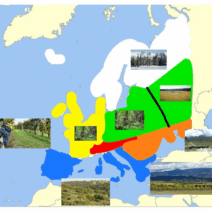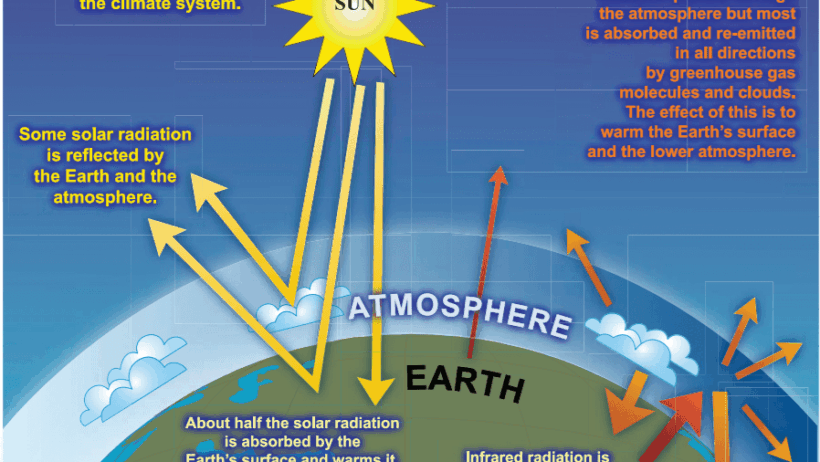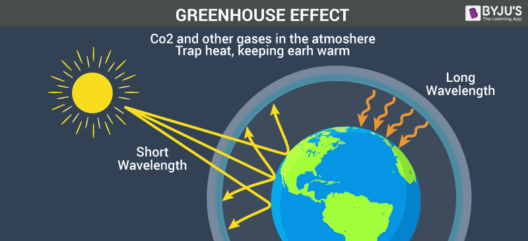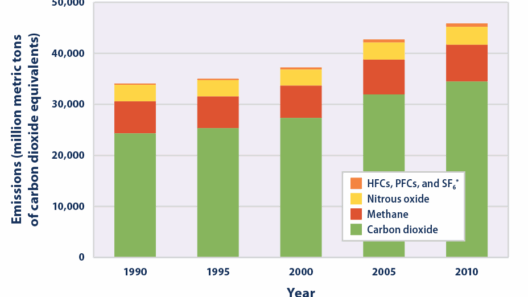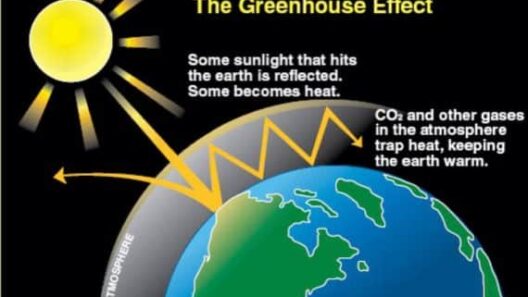The Greenhouse Effect is an intrinsic natural phenomenon that plays a pivotal role in regulating the Earth’s climate. This essay delves into the mechanics of the greenhouse effect, its significance, its implications, and the anthropogenic factors that exacerbate it. Understanding the greenhouse effect is not merely an academic exercise—it is essential for grasping the broader complexities of climate change and environmental stewardship.
At its core, the greenhouse effect involves the absorption and re-emission of thermal radiation by greenhouse gases in the Earth’s atmosphere. Solar radiation reaches our planet, where a portion is reflected back into space while the remainder is absorbed, warming the surface. The Earth then radiates this energy back into space as infrared radiation (heat). However, greenhouse gases, including carbon dioxide (CO2), methane (CH4), nitrous oxide (N2O), and water vapor, trap some of this heat, preventing it from escaping. This mechanism is crucial for maintaining a temperature that sustains life, as without it, the planet’s average surface temperature would be a frigid -18 degrees Celsius (0 degrees Fahrenheit) instead of the current average of approximately 15 degrees Celsius (59 degrees Fahrenheit).
Exploring the components that facilitate the greenhouse effect reveals much about its functionality and the delicate balance within our atmosphere.
The Role of Greenhouse Gases in Climate Regulation
Greenhouse gases (GHGs) constitute a diverse assortment of molecules that possess the unique ability to trap heat. Carbon dioxide, one of the most prevalent GHGs, is produced through natural processes such as respiration and volcanic eruptions, as well as human activities including deforestation and fossil fuel combustion. Methane, another potent greenhouse gas, is released during agricultural practices, landfills, and the production of fossil fuels. Though methane is present in smaller quantities compared to CO2, its global warming potential is significantly higher—estimated to be 25 times that of CO2 over a century.
Nitrous oxide, another critical greenhouse gas, primarily emanates from agricultural and industrial activities but is also released from vehicle emissions and certain natural processes. Water vapor acts as an amplifier of the greenhouse effect; as the Earth’s temperature rises, the evaporation of water increases humidity, leading to additional warming. Each of these gases contributes to the greenhouse effect in varying degrees, intertwining to create a complex web of climate interactions.
Delving into the phenomena of climate feedback loops illuminates the far-reaching implications of the greenhouse effect. Positive feedback loops, which amplify warming, can arise when warmer temperatures lead to increased evaporation, enhancing water vapor concentrations and driving temperatures even higher. Conversely, negative feedback mechanisms, such as increased cloud cover which reflects sunlight and consequently cools the planet, can serve to mitigate warming. Nevertheless, the balance of these processes is delicate and easily disrupted by anthropogenic actions.
Human Impact: A Double-Edged Sword
In recent centuries, human activity has intensified the greenhouse effect significantly, primarily through the combustion of fossil fuels, industrial processes, and changes in land use. The drastic increase in GHG concentrations in the atmosphere has resulted in a phenomenon known as climate change, characterized by rising global temperatures, melting glaciers, and extreme weather patterns.
The industrial revolution marked the beginning of a paradigm shift, where emissions escalated progressively due to the reliance on coal, oil, and natural gas. This carbon-heavy trajectory has led to an alarming rise in average atmospheric CO2 levels, surpassing 400 parts per million for the first time in millions of years. This acceleration is markedly evident in the second half of the 20th century—a time when both population and energy demand surged exponentially.
This human-induced enhancement of the greenhouse effect has profound implications for ecosystems and human societies around the globe. Warming temperatures contribute to habitat destruction, species extinction, and shifts in natural biodiversity. Furthermore, vulnerable communities, particularly in developing regions, face heightened risks due to the adverse impacts of climate change, such as food security challenges and increased frequency of natural disasters. The severity of these risks underscores the urgency for collective global action toward sustainable practices.
The Path Forward: Mitigation Strategies and Solutions
A comprehensive understanding of the greenhouse effect leads to the imperative question: how can humanity mitigate its impact? A multifaceted approach is essential, integrating policy, technological innovation, and lifestyle changes.
Transitioning to renewable energy sources, such as solar, wind, and hydroelectric power, can significantly reduce reliance on fossil fuels and decrease greenhouse gas emissions. Implementing energy-efficient technologies in industries and households can further cut emissions, while reforestation and afforestation initiatives can enhance carbon sequestration, pulling CO2 from the atmosphere.
Advocacy for sustainable agricultural practices and reduction of methane emissions through improved waste management and livestock management is equally vital. Crucially, educational initiatives that promote awareness of climate change and its implications can foster a more environmentally conscious society. Through concerted efforts involving individuals, communities, businesses, and governments, we can collectively navigate the complexities of the greenhouse effect and its related challenges.
In conclusion, while the greenhouse effect is a natural and necessary phenomenon, its exacerbation due to anthropogenic activities poses severe threats to the planet. By understanding the mechanisms at play, acknowledging human impact, and pursuing strategic solutions, we can forge a path toward a more sustainable and resilient future for our planet. A collective commitment to mitigating climate change not only honors the intricate balance of our ecological systems but also ensures a healthier planet for generations to come.
